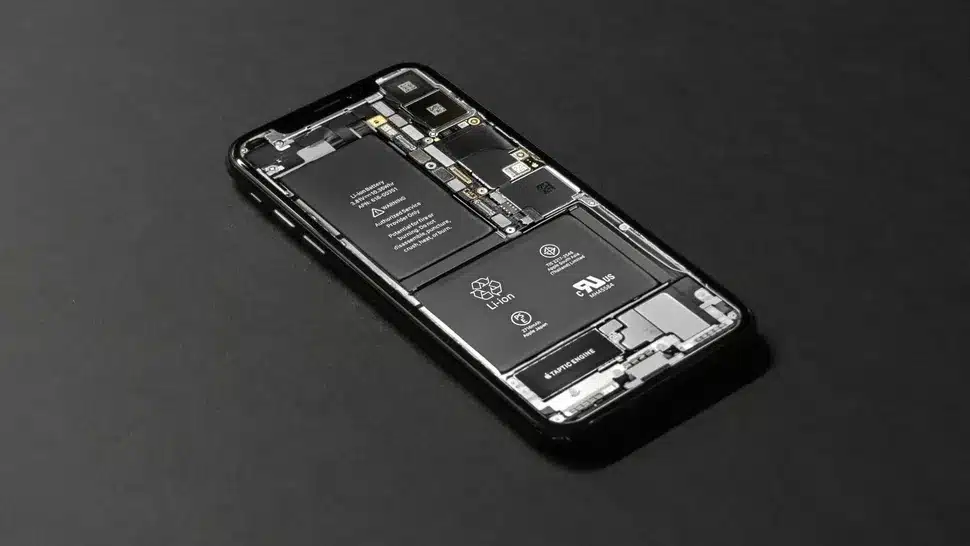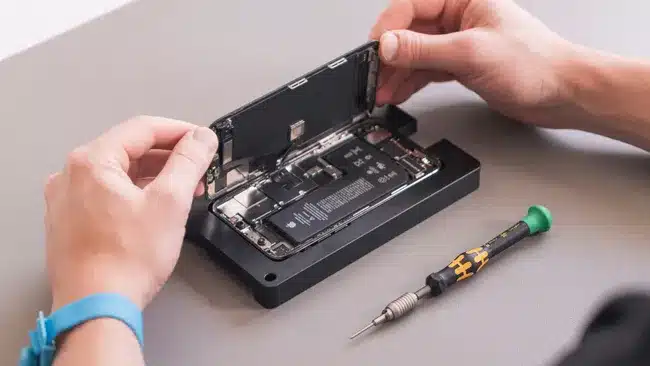Apple is reportedly considering a significant change in its design philosophy for the upcoming iPhone 16, aimed at making battery replacements much more straightforward for users. This move could mark a significant shift in Apple’s approach to device repairability, aligning with growing consumer demand for more sustainable and user-friendly tech. Here, we delve into the potential changes and their implications for iPhone users.
The Current Battery Replacement Scenario
Challenges with Existing Models
Replacing the battery in current iPhone models is a complex task that typically requires professional assistance. The process involves removing the display, which is glued and sealed tightly to maintain water resistance. This intricate design, while enhancing durability and aesthetic appeal, makes battery replacements difficult for the average user.
Why Easier Battery Replacements Matter
Sustainability and User Convenience
Simplifying battery replacements aligns with the broader trend towards sustainability and reducing electronic waste. By making it easier for users to replace their batteries, Apple can extend the lifespan of its devices, reduce the environmental impact of frequent upgrades, and promote a more sustainable product lifecycle.
Potential Design Changes in the iPhone 16
Modular Battery Design
One of the most talked-about potential changes is the adoption of a modular battery design. This approach would allow the battery to be easily removed and replaced without needing to dismantle the entire device. Such a design could involve a removable back cover or a simplified internal structure that makes the battery accessible without compromising the device’s integrity.
Improved Battery Compartment
Another possible enhancement is the redesign of the battery compartment itself. By creating a dedicated, easily accessible compartment for the battery, Apple can facilitate quicker and safer replacements. This change could also involve the use of less adhesive and more mechanical fasteners that can be easily removed with standard tools.
Technological Innovations Supporting This Shift

Advances in Battery Technology
The feasibility of these design changes is supported by recent advances in battery technology. Newer battery materials and construction methods can create more durable and flexible battery packs, which are easier to handle and install. These innovations could play a crucial role in enabling easier battery replacements without sacrificing performance or safety.
Enhanced Device Durability
Apple’s commitment to durability is likely to remain a priority even as it simplifies battery replacements. Advances in materials science and engineering can help ensure that any new design maintains or even improves the iPhone’s resistance to water, dust, and impact. This balance between ease of repair and durability will be essential to maintaining the brand’s reputation for quality.
Consumer and Industry Impact
Boost in User Satisfaction
For consumers, the ability to replace their iPhone battery easily could significantly enhance their overall experience and satisfaction with the product. This change would empower users to maintain optimal battery performance over the device’s lifespan, reducing the frustration and inconvenience of battery degradation.
Market Competitiveness
From an industry perspective, this move could set a new standard for smartphone design. If Apple implements these changes successfully, it could prompt other manufacturers to follow suit, leading to a broader shift towards more repairable devices across the industry. This trend could also influence regulatory bodies that are increasingly advocating for right-to-repair laws and greater consumer rights in technology.
Apple’s Historical Context and Future Prospects
A Shift in Philosophy
Historically, Apple has been known for its sleek, integrated designs that prioritize form and function but often at the expense of repairability. However, recent years have seen the company taking steps towards more sustainable practices, such as using recycled materials and offering trade-in programs. Simplifying battery replacements in the iPhone 16 could be seen as a continuation of this evolving philosophy.
Potential Announcements and Timelines
While there has been no official confirmation from Apple regarding these design changes, industry analysts and insiders suggest that announcements could be made in the coming months, with the iPhone 16 expected to debut in late 2024. As anticipation builds, consumers and tech enthusiasts will be keenly watching for any updates on this front.
Conclusion
A Step Towards Sustainability and User Empowerment
The potential simplification of battery replacements in the iPhone 16 represents a significant step towards more sustainable and user-friendly technology. By making it easier for users to replace their batteries, Apple can extend the lifespan of its devices, reduce electronic waste, and enhance user satisfaction. As we await official confirmation and further details, this rumored change already marks a promising direction for the future of smartphone design.
















